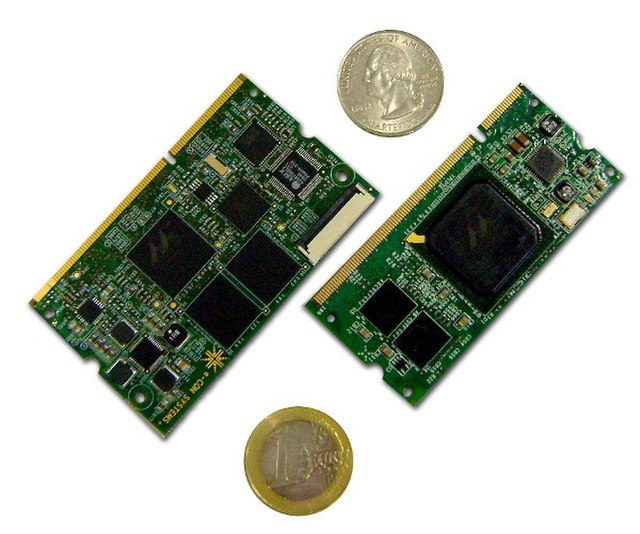An embedded system is a computer system—a combination of a computer processor, computer memory, and input/output peripheral devices—that has a dedicated function within a larger mechanical or electronic system. It is embedded as part of a complete device often including electrical or electronic hardware and mechanical parts.
Because an embedded system typically controls physical operations of the machine that it is embedded within, it often has real-time computing constraints. Embedded systems control many devices in common use. In 2009, it was estimated that ninety-eight percent of all microprocessors manufactured were used in embedded systems.
An embedded system on a plug-in card with processor, memory, power supply, and external interfaces
Embedded Computer Sub-Assembly for Accupoll Electronic Voting Machine
e-con Systems eSOM270 & eSOM300 Computer on Modules
Embedded system text user interface using MicroVGA
Computer memory stores information, such as data and programs, for immediate use in the computer. The term memory is often synonymous with the terms RAM, main memory or primary storage. Archaic synonyms for main memory include core and store.
DDR4 SDRAM module. As of 2021[update], over 90 percent of computer memory used in PCs and servers was of this type.
Electromechanical memory used in the IBM 602, an early punch multiplying calculator
Detail of the back of a section of ENIAC, showing vacuum tubes
Williams tube used as memory in the IAS computer c. 1951





![DDR4 SDRAM module. As of 2021[update], over 90 percent of computer memory used in PCs and servers was of this type.](https://upload.wikimedia.org/wikipedia/commons/thumb/6/6c/RAM_Module_%28SDRAM-DDR4%29.jpg/640px-RAM_Module_%28SDRAM-DDR4%29.jpg)


